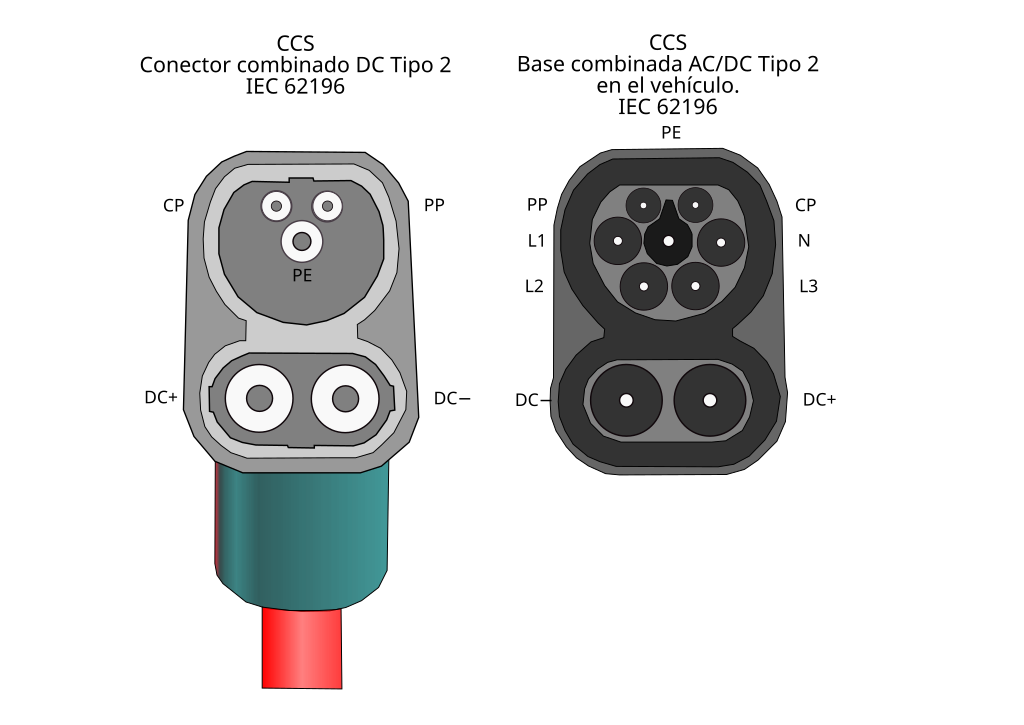De Tesla 350 kWh superchargers of zelfs zwaardere? komen sowieso, en daarenboven kan Tesla ook nog aan de andere geplande 350 kWh CCS-laders opladen.
Ondertussen zijn er al 18 modellen puur electrische wagens, en tegen 2020 zal dat zeker verdrievoudigen, denken de onwetende knalpotlovers nu echt dat men daar geen standarisatie gaat voor voorzien, die is er namelijk al.
Die CCS-350 kWh DC-laadpalen zijn al vast ingepland hoor,
dit jaar beginnen ze met 100-150-200 kWh DC-laadpalen, wat al minstens een verdrievoudiging is van de inmiddels al wat bejaarde 50 kWh-DC-palen (sinds 2011 # Chademo).
Uiteraard zijn de huidige acupacks (< 2016) meestal nog op die 50 kWh laadpalen afgestemd, de 2017 versies zullen wel al de zwaardere aankunnen zoals de Hyundai Ioniq EV die als eerste voorzien is om aan die zware CCS-laadpalen te laden (niet op de tekst letten):
Citaat:
http://www.egear.be/hyundai-ioniq/
De elektrische versie heet “IONIQ Electric”. De wagen wordt voorwielaangedreven door een 120 pk sterke elektromotor die 295 Nm koppel levert. Z’n topsnelheid bedraagt 165 km/u.
Met z’n 28 kWh batterij tekent hij een officieel (NEDC) rijbereik op van 280 km. Dankzij z’n 100 kW CCS-lader kan je hem in 25 minuten vol laden. Met een 7 kW Wallbox duurt het 4u tot 5u en via een gewoon Schuko-stopcontact duurt het ongeveer 10 uur.
De Electric komt in België op de markt in november 2016.
|
Natuurlijk zijn er nog de lichtere AC-laadpalen waar men wel via de omvormer/lader van de auto laadt, en dat naargelang lader 11 kWh tot 22 kWh. Ook de destination AC-chargers van Tesla nemen steeds maar toe, ook tot 22 kWh:
vbn:
- https://fastned.nl/nl
-
https://www.tesla.com/nl_BE/destinat...ng?redirect=no
Citaat:
Citaat:
https://en.wikipedia.org/wiki/Combined_Charging_System
The Combined Charging System is a quick charging method for battery electric vehicles delivering high-voltage direct current via a special electrical connector derived from the SAE J1772 (IEC Type 1) or IEC Type 2 connector. As the plug is a combination of an AC connector with a DC option the resulting connector is also called Combo Coupler and the variant with Type 2 is abbreviated as Combo2.
Automobile manufactures that support CCS include: Volkswagen, General Motors, BMW, Daimler, Ford, FCA and Hyundai.[1][2] The CharIN consortium that controls the CCS standard[3][4] is working on 200 kW charging rate and in a charging rate of 350 kW[5][6] beginning in 2017.
In the United States, BMW and VW claim that the East Coast and West Coast corridors have complete CCS networks.[7]
Competing standards include CHAdeMO and Tesla Supercharger.
|
http://www.charinev.org/ccs-at-a-gla...at-is-the-ccs/
What is the Combined Charging System (CCS)?
Here’s an overview of its principal characteristics.
The Combined Charging System (CCS) is based on open and universal standards for electric vehicles. The CCS combines single-phase with rapid three-phase charging using alternating current at a maximum of 43 kilowatts (kW), as well as direct-current charging at a maximum of 200 kW and the future perspective of up to 350 kW – all in a single system.
The CCS includes the connector and inlet combination as well as all the control functions. It also manages communications between the electric vehicle and the infrastructure. As a result, it provides a solution to all charging requirements.
The key features of the Combined Charging System include the following:
AC charging:
With the electrical interface specification for power transmission, which includes safety-related signalling for AC charging that complies with the international IEC 61851-1 standard
With a connector Type 2 in Europe that is compliant with the international IEC 62196-2 standard
DC charging:
With the electrical interface specification for power transmission, which includes safety-related signalling for DC charging that complies with the international IEC 61851-23 standard.
With the connector Combo 2 in Europe, compliant with the international IEC 62196-3 standard
The communication interface between the electric vehicle and the charging point, based on the international standard ISO/IEC 15118 and the German DIN SPEC 70121.
|
De kabel rechts met de twee dikke DC-pluggen is voor het zware DC-laden.
(sommige fossielen hebben vooral veel tekeninkskes nodig

)


DC-CCS-Charging Stations in the Main Markets

# al verjaard maar men kan de trend doordenken tot 2018... :
 http://insideevs.com/which-dc-fast-c...emo-ccs-tesla/
http://insideevs.com/which-dc-fast-c...emo-ccs-tesla/